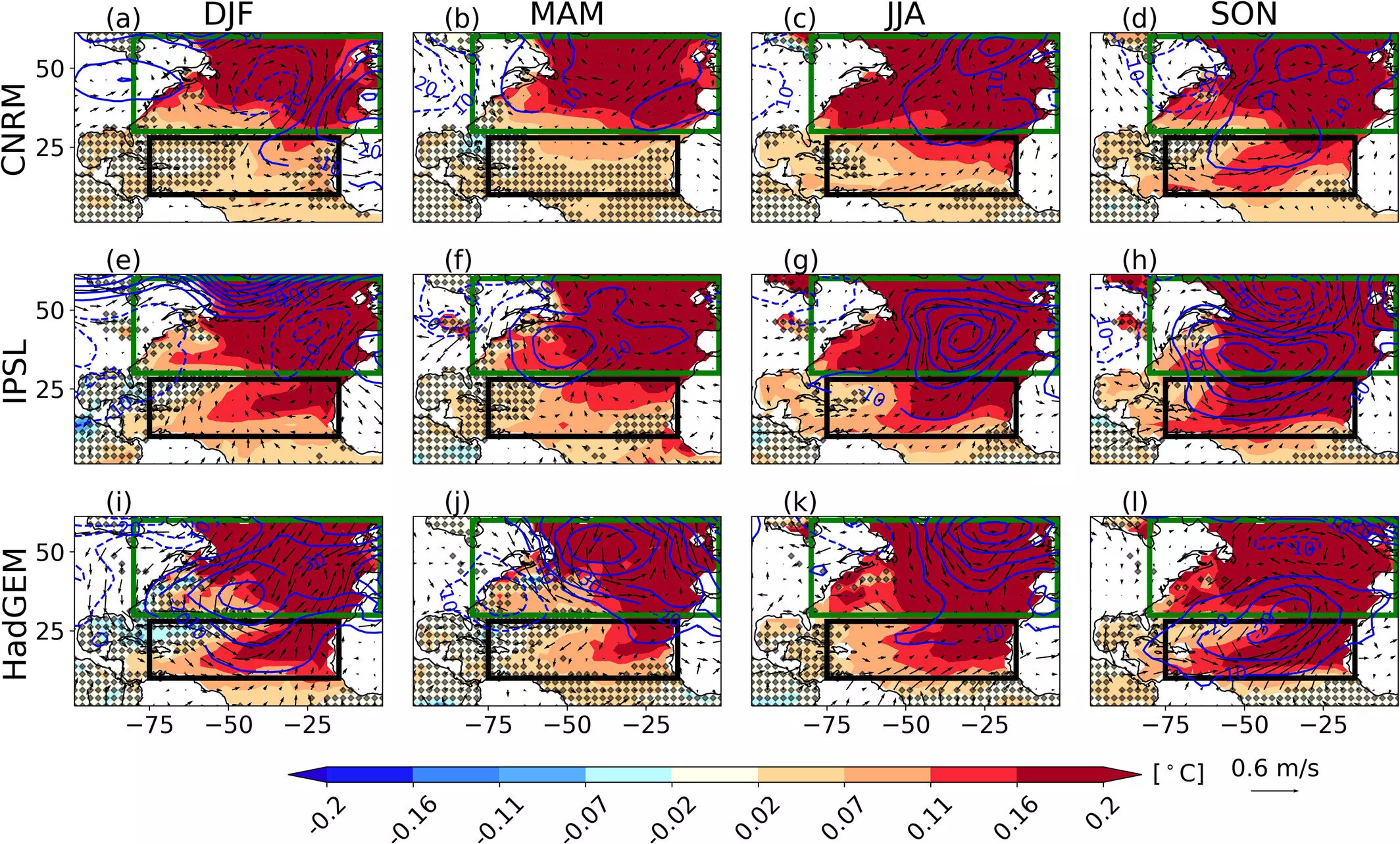Recent research has shed light on the critical influence of ocean dynamics in the Atlantic tropics on global climate patterns. For years, the mechanisms underpinning long-term climate changes, particularly the Atlantic Multidecadal Variability (AMV), were thought to stem primarily from heat transfers between the atmosphere and ocean. However, a pivotal study led by Dr. Balaji Senapati at the University of Reading challenges this conventional wisdom, attributing the core dynamics of AMV to the ocean’s mixed layer, which is the zone where surface waters interact with cooler depths.
This discovery is significant, as it shifts the narrative from a focus solely on atmospheric factors to a more holistic approach that incorporates underwater phenomena. By understanding that variations in the mixed layer depth can have profound impacts on climate variability, scientists are provided with a fresh perspective on the intricate relationships governing our climate system.
Climate Feedback Loops and Their Consequences
The study identifies a feedback loop essential to understanding the relationship between the Atlantic’s temperature fluctuations and broader climatic impacts. When the extratropical North Atlantic experiences warmer than average conditions, there is a notable weakening of trade winds, which in turn causes the mixed layer to become shallower. This allows for a more pronounced warming of the tropical Atlantic, as solar energy heats a less voluminous layer of water.
The interplay of these mechanisms highlights the interconnectedness of oceanic and atmospheric systems. It illustrates a process where warmer temperatures influence trade winds, reinforcing the initial warming trend and potentially leading to more severe weather patterns across regions including the Caribbean and the Sahel.
The implications of this research extend beyond theoretical understanding; they touch on the practical aspects of climate modeling and forecasting. Current models that fail to adequately represent the dynamics of these upper ocean processes may risk providing inaccurate predictions of AMV and its global repercussions. As climate change continues to present unprecedented challenges, refining our predictive tools becomes essential.
Incorporating the new findings regarding ocean mixing into climate models stands to enhance the accuracy of long-term climate forecasts, offering critical insights into future weather patterns. A better grasp of AMV dynamics will allow scientists, policymakers, and communities to develop more informed mitigation and adaptation strategies, paramount for combating the effects of climate change.
As the study highlights, our understanding of climate variability is continually evolving. Researchers must remain vigilant in investigating the ocean’s role in climate dynamics and in updating models accordingly. The depth of the ocean’s mixed layer may seem a minor detail within the vast complexity of climate systems, yet its implications are profound, revealing the delicate balance between the ocean’s currents and the atmosphere.
As we delve deeper into oceanic research, it becomes increasingly evident that the keys to understanding and mitigating the impacts of climate change lie beneath the surface. This study not only enriches scientific knowledge but also underscores the urgency of integrating such findings into our ongoing climate discourse and action plans.


Leave a Reply